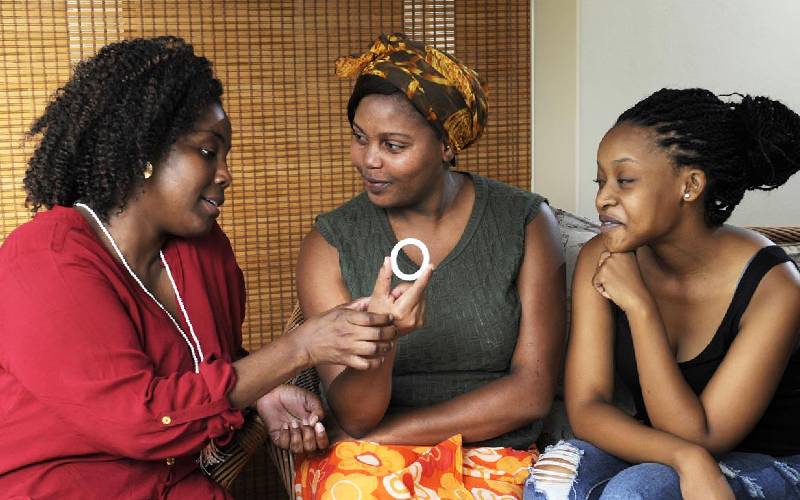
Since the first case of Covid-19 was reported in Wuhan, China, researchers around the world have been finding an elixir that will end the global pandemic. Although much attention has been paid to the new coronavirus, scientists have made major breakthroughs to fight another giant disease: HIV and AIDS.
Over the past few months, the world has shown three important milestones in the prevention and treatment of a disease that has infected approximately 38 million people worldwide.
1. The vaginal ring
The use of oral pre-exposure prophylaxis (PrEp) tablets, the female condom and safe sex practices have been the only option for decades to protect women and girls from the risk of HIV infection.
Women and girls of reproductive age are generally at greater risk of infection, and this population accounts for 60 percent of all infections in sub-Saharan Africa.
Introduce the Dapivirine Vaginal Ring (DPV-VR), a first-of-its-kind HIV prevention option tailored for women since the female condom was approved nearly 30 years ago. The self-administering flexible ring is made of silicone and is easy to bend and insert into the vagina. Once inside, it slowly releases an antiretroviral (ARV) drug called dapivirine into the vagina during its duration.
“The DPV-VR is intended to be used to reduce the risk of acquiring HIV during vaginal sex for women 18 years and older who have a higher HIV risk, in combination with safer sex practices than oral pre-exposure prophylaxis (PrEP) has not been used, cannot be used or is not available, ”says the World Health Organization.
2. The injectable PrEP
A major study conducted in seven African countries, including Kenya, found that women who inject a drug called Cabotegravir have 89 percent fewer HIV infections than those who take PrEP pills daily. Although numerous studies show the effectiveness of oral PrEP when taken as prescribed, adherence to the daily pills is the biggest challenge.
With PrEP, people can reduce their risk of becoming infected with HIV, especially during periods of increased risk in their lives. The new remedy, which is injected once a month, allows for discretion and helps indiscriminate couples, sex workers and other people at risk overcome social barriers associated with HIV.
However, Kenyans will have to wait to receive the injection.
“It will definitely take time before it becomes available in sub-Saharan Africa, but the expectation is that it will be just like oral PrEP for free,” says Dr. Peter Cherutich, a public health expert.
3. Monthly stitch for HIV patients
The U.S. Food and Drug Administration has approved a monthly injectable medication. The new drug – Cabenuva – consists of Cabotegravir and Rilpivirine, which will only be administered to adults with suppressed viral loads and who have no history of treatment failure.
Two studies involving approximately 1,100 patients from 16 countries found that the jab was just as effective as daily pills in suppressing HIV during a 48-week study period. The injectable means consists of two injections into the buttocks.
The monthly beating will remove the burden associated with taking daily pills, as well as the discomfort of carrying medication everywhere. It will also be a relief for patients who hide when they use drugs because of the stigma associated with HIV.
Meanwhile, a phase one clinical trial testing a new vaccine approach to prevent HIV has yielded promising results, highlighting the success of the production of rare immune cells needed to generate the process of generating antibodies against the fast-mutating virus , to stimulate.
The study, conducted by IAVI and Scripps Research, is the basis for additional clinical trials aimed at creating a safe and effective HIV vaccine.
